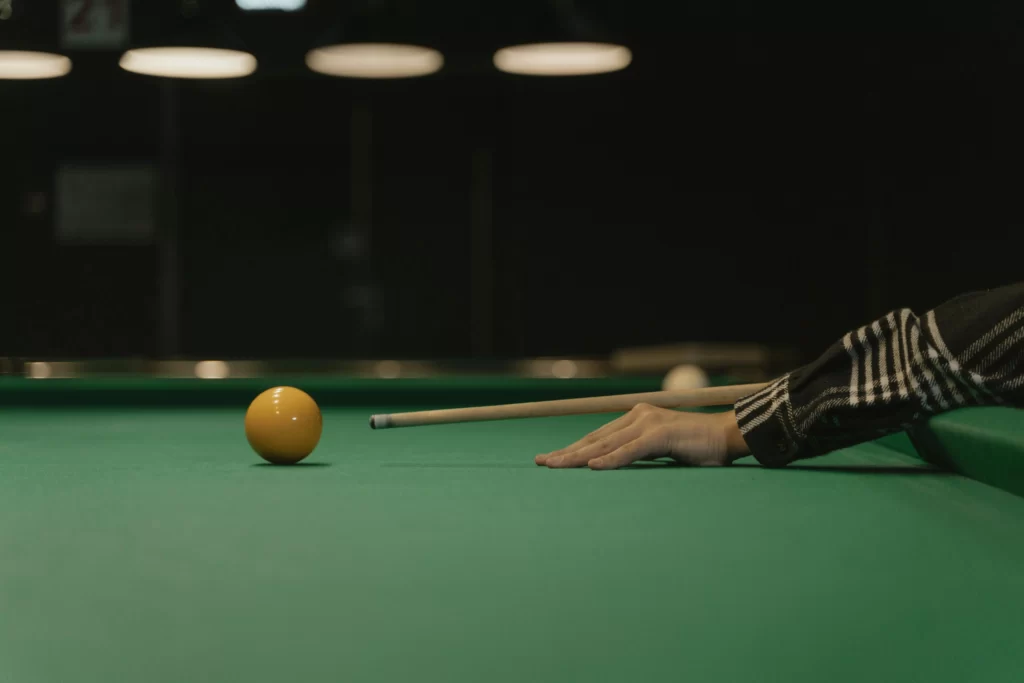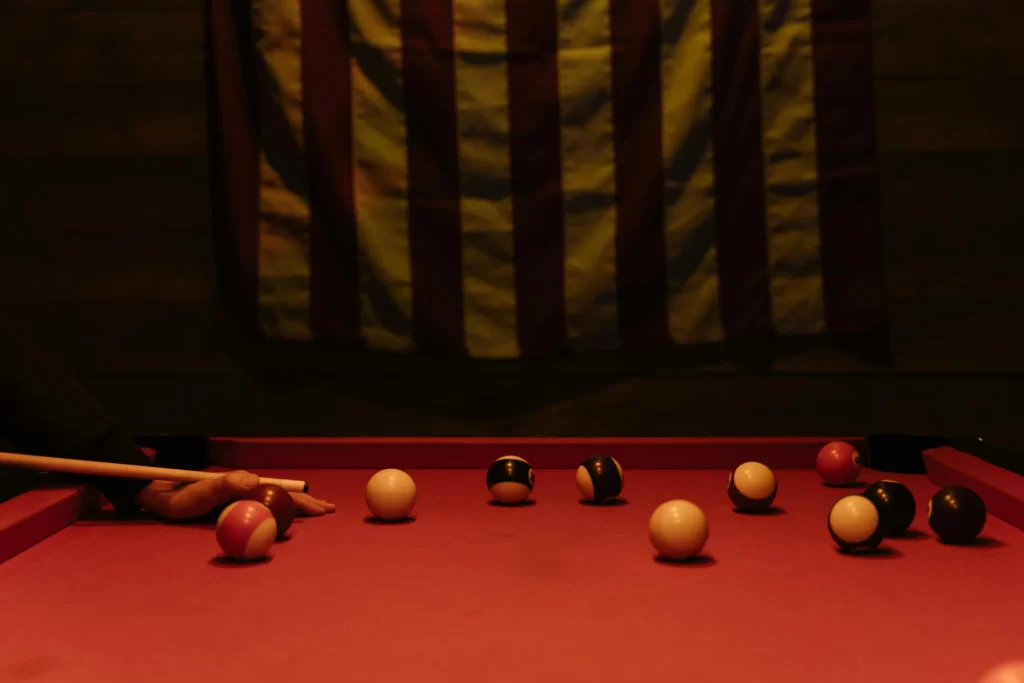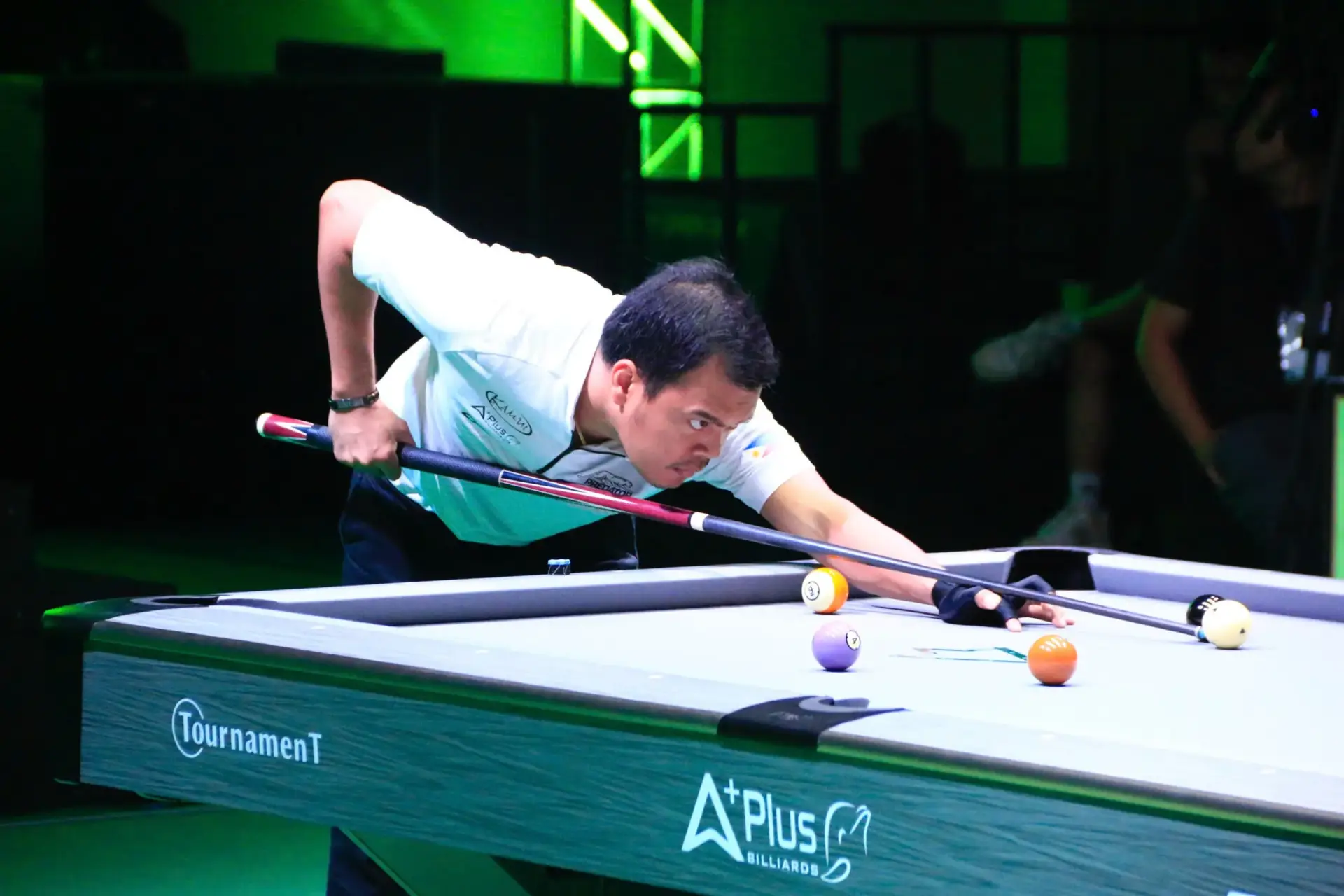Playing on green cloth turns an ordinary leisure activity into an intellectual challenge that simultaneously entertains and trains the mind. In contrast, the variety of billiards disciplines is striking. The differences between Russian billiards and American billiards are so striking that it seems they are not just different sports, but completely separate worlds. One universe requires filigree precision, the other dynamic reaction and creativity. Each side has its own rules, table dimensions, ball parameters and tactical approaches.
Understanding these differences will not only help you improve your technique, but also make playing more exciting. Billiards tournaments bring together millions of fans around the world, where intellectuals enjoy not only the spectacle but also the in-depth strategy. Learn the differences between these disciplines and discover new horizons on the green sheet.

The difference between the rules of Russian billiards and pool – rigour vs dynamism
The rules are the basis of any game, they determine the complexity and style of the passes. The differences between Russian billiards and American billiards are most evident in the established rules. The latter allows dynamism and forgives small blunders, while the former requires the highest level of concentration and precision.
Features of Russian billiards rules
There are strict and rigorous rules that make every game a real test of skill. Players face the following characteristics:
- The size of the pockets: only 3-4 millimetres wider than the ball, which requires perfect precision in every shot. Any mistake is fatal.
- Types of game: there are several popular variants: ‘Free Pyramid’, ‘Combined Pyramid’, ‘Dynamic Pyramid’. Each of them has its own nuances and requirements. For example, in ‘Free Pyramid’ any ball can be pocketed, and in ‘Combined Pyramid’ – some according to strict rules.
- Order of victory: the player who has a certain number of balls first wins. In ‘Free Pyramid’ it is 8, and in ‘Combined’ – the combination depends on the tournament rules.
- Tactical shots: players often use complex bets, calculating not only the trajectory of the ball, but also that of the cue.
Russian billiards, unlike American billiards, is considered a discipline that requires strategic thinking and long thought before each stroke. This game is suitable for those who prefer a calm and methodical approach.
American pool rules
This format is known for its accessibility and dynamism. Here the rules are simpler and the process is faster:
- Wide holes: the balls are considerably wider, making it easier to hit them even with a less than ideal shot.
- The most popular game types are Eights, Nines and Pool 10. In ‘Eights’, players are divided into “stripes” and ‘solids’, aiming to hit all the balls in their category and then make an eight. In ‘Nines’, balls 1 to 9 are played in turns and victory is awarded for catching the ninth ball.
- Combinations: Players create shots with bounces, spins and other spectacular elements to make the game exciting and dynamic.
- Forgiveness for mistakes: With wider holes and smaller balls, players can take more risks and experiment with their shots.
American pool is a fast and exciting game that requires reaction and creativity. This option is ideal for those who prefer an active and exciting style.
Russian and American pool tables: differences in size determine the style of the game.
 The size and design of a billiard table greatly affect the nature of the game. Knowing the specifics of the material will help you choose the right approach and improve your skills.
The size and design of a billiard table greatly affect the nature of the game. Knowing the specifics of the material will help you choose the right approach and improve your skills.
Russian billiard tables
This cloth commands respect for its size and precision:
- Dimensions: standard – 12 feet (3.66 m). This is one of the largest billiard tables, requiring space and fitness to play.
- Cushions: the corner and centre cushions have minimal space. Each stroke requires incredible precision and strength.
- Cloth: a dense, stiff cloth is used to ensure the ball slips as little as possible. This increases the difficulty of the game and requires precise calculations from the players.
- Table height: 80-85 cm, so suitable for complex shots from different positions.
Such a table requires a serious approach to the game and technical skill, making every game a real test of skill and patience.
American billiard tables
American billiard tables are smaller and easier to use, unlike Russian billiard tables:
- Dimensions: 2.1-2.7 m (7-9 ft). Their compact dimensions allow them to play dynamically even in small spaces.
- Holes: wide with rounded edges create favourable conditions for spectacular shots and combinations.
- Cloth: the soft, smooth cloth reduces drag, making the balls move faster and smoother.
- Mobility: pool tables are lighter and easier to assemble, making them popular in bars and leisure centres.
The pool table offers more freedom for improvisation and experimental shots, making the game accessible and dynamic.
Balls for billiards and pool: size matters
The size and weight of the balls have a major impact on the technique and strategy of the game. The differences between Russian billiards and American billiards are also evident in the parameters of these projectiles. The right size of balls determines the complexity of shots and the power required.
Balls for Russian billiards are characterised by their large size and weight:
- Diameter: 68 mm. This makes the balls one of the largest among all types of billiards.
- Weight: up to 285 grams. Such a weight requires from the player not only precision, but also physical strength to make strong strokes.
- Material: Durable phenol-formaldehyde plastic is used for production. This material guarantees durability and minimal deformation of shape on impact.
- Colours: The balls are predominantly white. Different variants of the set can use numbered or labelled sleeves.
Due to their large diameter and weight, Russian billiard balls require more precision and power when hitting. The trajectory of movement here is more predictable, but it is more difficult to hit the hole.
American billiard balls, unlike Russian billiard balls, are smaller and lighter:
- Diameter: 57.2 mm, which is 10 mm less than Russian billiard balls.
- Weight: from 165 to 170 grams, which means the stroke requires less physical force.
- Colours and markings: the balls are divided into ‘plain’ and ‘striped’ balls, numbered from 1 to 15. This labelling facilitates their identification. This labelling makes it easier to identify the balls during play.
- Material: the same phenol-formaldehyde plastic is used, guaranteeing durability and longevity.
The smaller size and weight of the billiard balls allows players to make a greater variety of shots through spins, bounces and combinations. This makes the game spectacular and dynamic and offers many opportunities for tactical solutions.
Russian billiards vs American billiards – differences and key features
Comparing these two disciplines helps to better understand their specific features and choose the right game type.
Russian billiards requires
- Long bets and trajectory calculations.
- Use of power and precision in the stroke.
- Tactical thinking and patience.
American billiards focuses on:

- Quick decisions and reaction.
- Spectacular combinations and strokes.
- Improvisation and creativity.
Conclusion
 The differences between Russian billiards and American billiards are obvious in all aspects, from rules to strategy. One format requires precision and patience, the other dynamism and creativity. These disciplines offer unique challenges, allowing you to choose a game that suits you. Regardless of your preferences, billiards will always remain an intellectual and exciting leisure activity that develops thinking skills and provides fun.
The differences between Russian billiards and American billiards are obvious in all aspects, from rules to strategy. One format requires precision and patience, the other dynamism and creativity. These disciplines offer unique challenges, allowing you to choose a game that suits you. Regardless of your preferences, billiards will always remain an intellectual and exciting leisure activity that develops thinking skills and provides fun.
 en
en  ru
ru  de
de  ar
ar  es
es  nl
nl  hi
hi  fr
fr  it
it  pt
pt  el
el 



